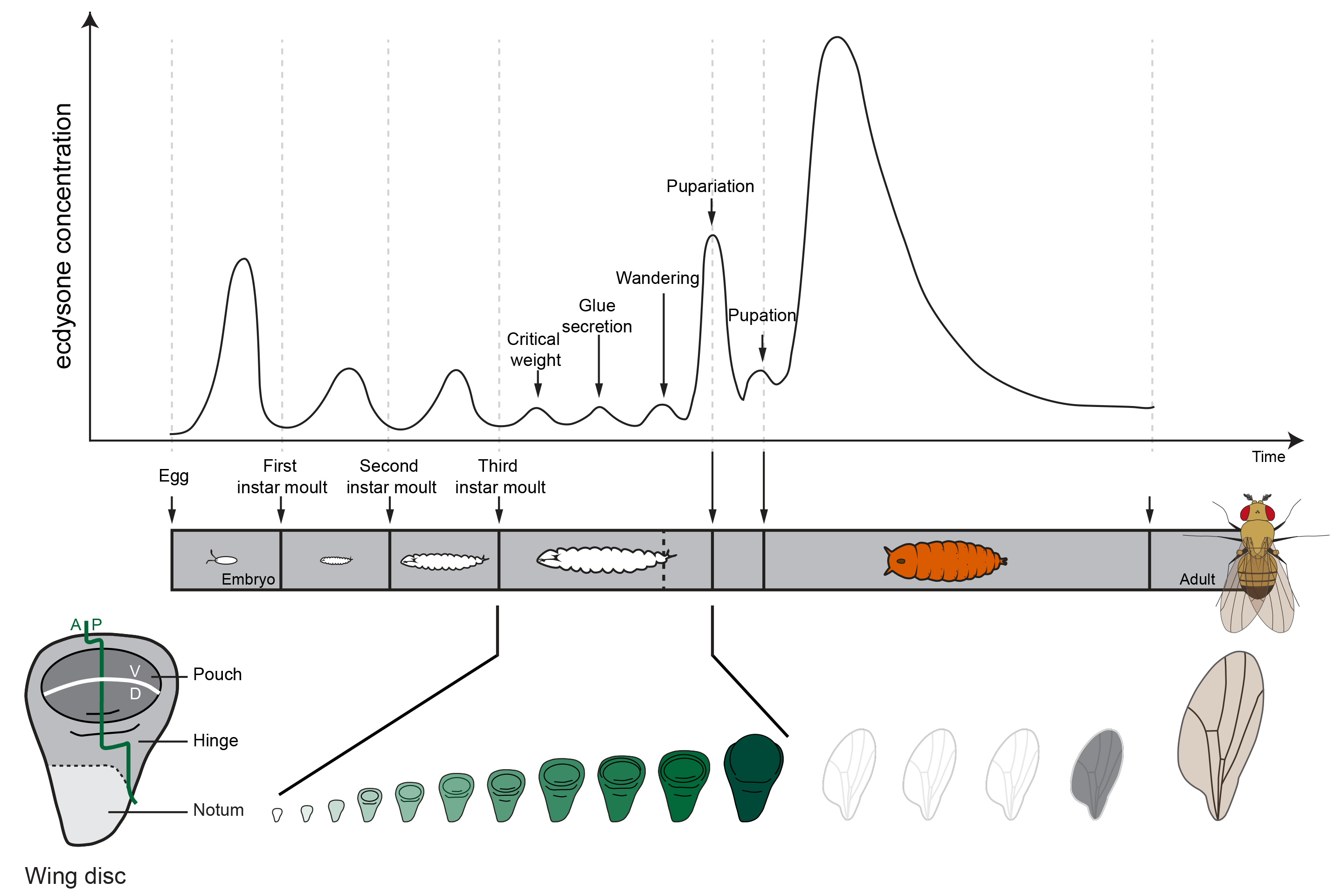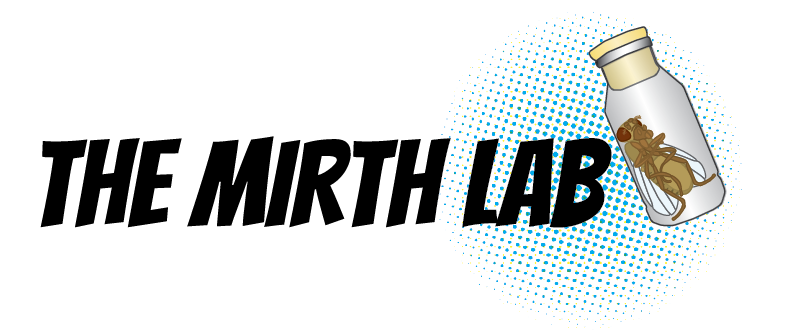The regulation of body and organ size.
In insects, adult body size and shape are determined by growth in the larval stages. Changing environmental conditions like temperature or the quality of the larval food affects this growth by modifying both the rates of organ growth and the length of time organs spend growing. Our work aims to understand how environmental conditions alter the synthesis of hormones that regulate the rate and duration of organ growth, how organ growth is coordinated with whole body development, and how organs coordinate their growth with their patterning processes.

Pulses of the developmental hormone ecdysone induce the moults between larval stages and metamorphosis. The timing of these pulses depends on environmental conditions like nutrition, altering the duration of the growth period with the larval environment. In addition, ecdysone regulates both the growth and the patterning of developing adult tissues like the wing disc, which later gives rise to the adult wing. Thus, ecdysone acts as a nexus coordinating the environment, whole animal development, and organ growth and patterning.
The evolution of body size
We are interested in how size and the relative proportions of body parts evolves between species from the genus Drosophila. Size has evolved several times both within and between species groups. We would like to discover which of the known mechanisms for size control evolve to produce these differences.

Populations of Drosophila mojavensis have differentiated into distinct races, utilizing different cacti present in the deserts they inhabit. Drosophila mojavensis wrigleyi, native to Catalina Island off the coast of California, is a smaller-bodied fly with smaller ovaries (measured by counting ovariole number). Drosophila mojavensis sonorensis lives in the Sonoran desert of southern US and northwest Mexico. Body and ovary size in these species responds differently to altered nutrition, showing that nutritional plasticity for body and organ size has evolved between races.

